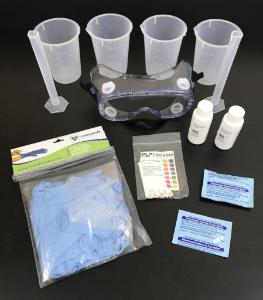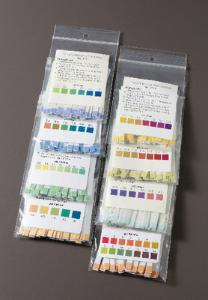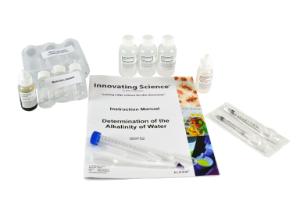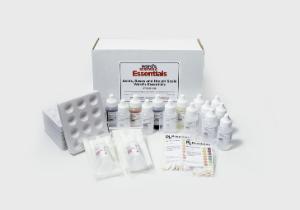The Basics of Balancing Swimming Pool pH
Middle and High School
National Swimming Pool Day falls on July 11th each year, marking our love of splashing, dunking, and floating all summer. Help the budding chemists in your classroom take a deep dive into the science of keeping those pools clean. Students will use their noodles to investigate the chemistry of balancing pool water pH to clear away algae, scaling, and bacteria.
Your lesson plan can help students understand the important role chemistry plays in caring for a pool to keep it crystal clear and fun to swim in. Using hands-on activities to help them identify the chemical characteristics common to acidic, neutral, and alkaline solutions will really float their boat! So, let’s slide right into two critical elements of pool chemistry: pH and alkalinity.
What are the basics of pH?
The pool’s potential of hydrogen (pH) measures how acidic or basic the water is on a scale from 0 to 14 (pure water is 7). So, anything below seven is very acidic, and anything above seven means your water is basic. The CDC recommends we keep our pH between 7.2 - 7.8.
High acidity is not kind to the pool’s pipes and filter system, not to mention how it can burn if you open your eyes underwater. When pool water is basic (really dry), our skin dries much faster (hey, that means fewer towels), but it could also damage the pool’s filter system.
The pool’s pH is essential to your sanitizer, specifically chlorine. There’s a good reason we add chlorine to the pool; it kills germs. When added to a swimming pool, it forms a weak acid called hypochlorous acid that kills bacteria like salmonella and E. coli and viruses that cause diarrhea and swimmer’s ear. When your pH is within the perfect range, chlorine does its best work. However, chlorine’s effectiveness is reduced when pool water is basic.
So, keeping the pool in the goldilocks zone between 7.2 and 7.8 is essential!
What is alkalinity?
The alkalinity of water is a measure of how much acid it can neutralize. The potential of hydrogen (pH) is the concentration of acid protons [H+]; pH is relatively volatile. Alkalinity and pH work together. Alkalinity consists of ions that incorporate acid protons into their molecules so that they’re not available as a free acid that can lower the pH (aka buffering). Pool experts recommend keeping alkalinity levels at 100 and 150 parts per million.
Use your lesson plans to encourage students to investigate the relationship between pH and alkalinity.
They’ll be the backyard heroes when they explain why the chemicals move together when you add them to either increase or decrease the pH or the alkalinity of the swimming pool.
Essentials of Acids, Bases, and pH
You can create hands-on, NGSS-aligned activities to help students learn more about pool water chemistry. Check out the two recommended resources below to get started. The curious future chemists in your class will enjoy examining the effects of acids and bases on chemical pH indicators. Create labs where they can explore the different properties of acids and bases and even determine the pH of common household materials.
Recommended Products
[StartProductBlock]

General Chemistry Buffer Activity: Acids, Bases, and Buffers
Demonstrate the concept of buffering activity. Basic college and high school general chemistry activity.
[EndProductBlock]
[StartProductBlock]

pH Indicator Papers and Test Strips
Measure the pH level of liquids and quickly determine if a solution is acidic, neutral, or alkaline.
[EndProductBlock]
[StartProductBlock]

Determination of the Alkalinity of Water
Perform a simple titration in the lab or field to determine freshwater samples' alkalinity and phenolphthalein.
[EndProductBlock]
[StartProductBlock]

Ward's® Essentials Acids, Bases, and the pH Scale Lab Kit
Examine the effects of acids and bases on chemical pH indicators and determine the composition of four unknown solutions.
[EndProductBlock]
